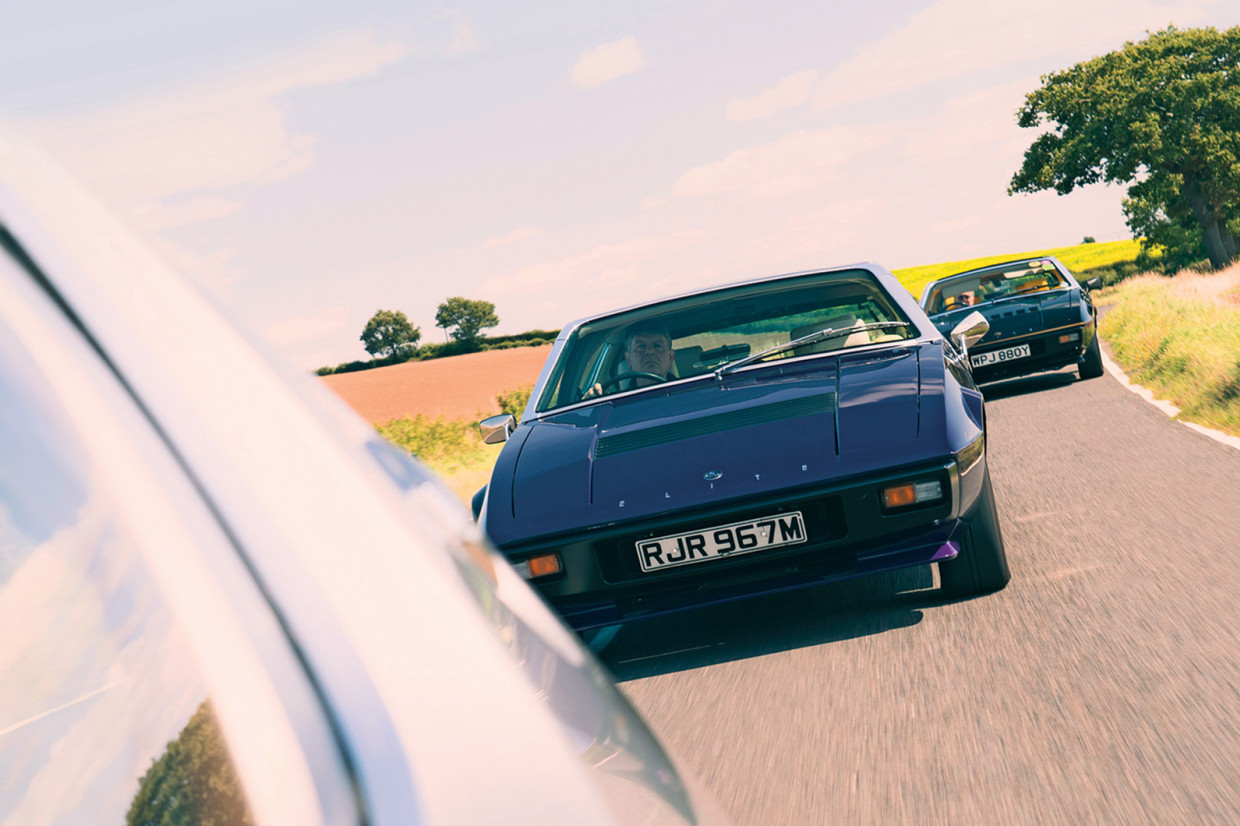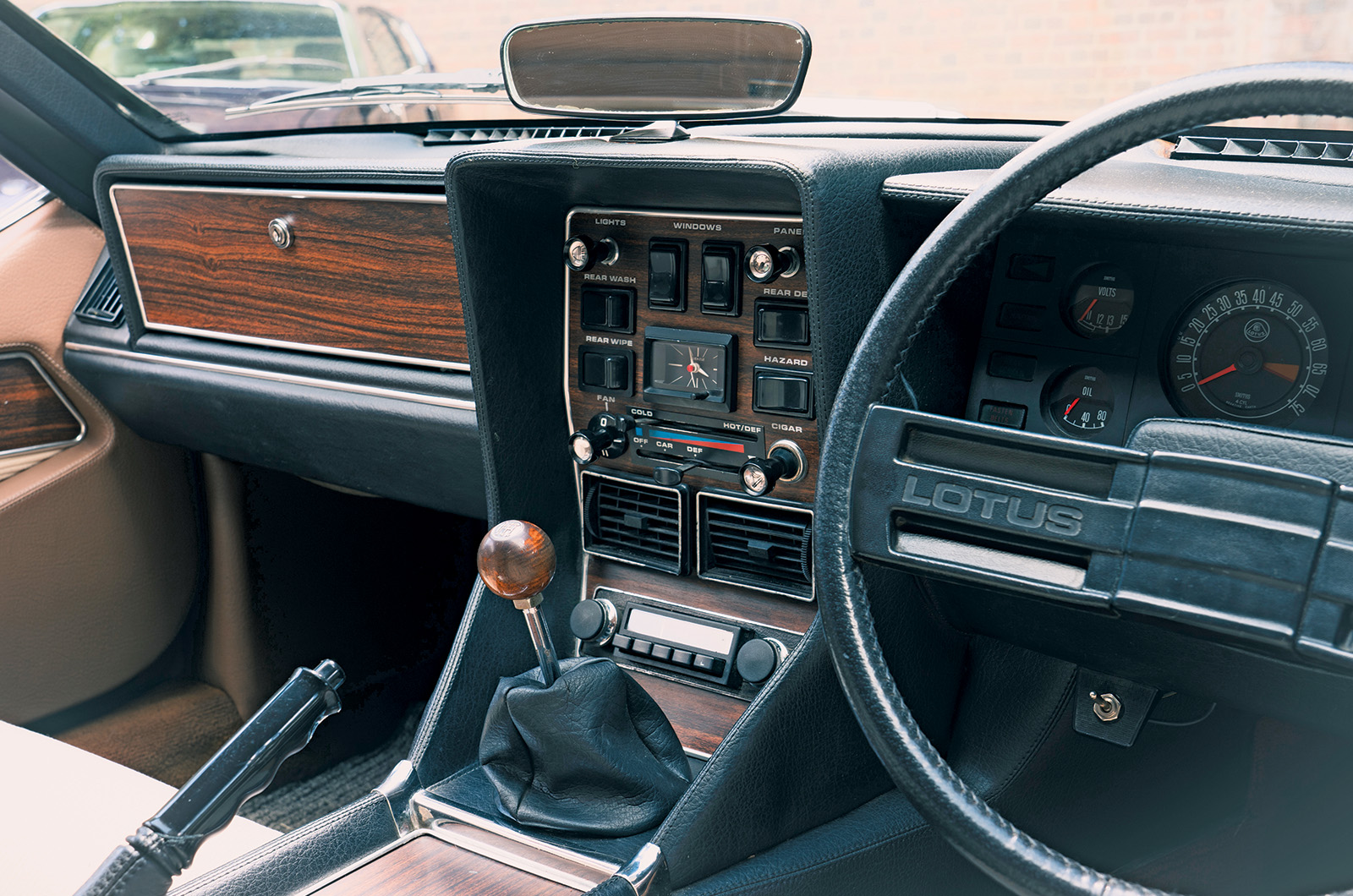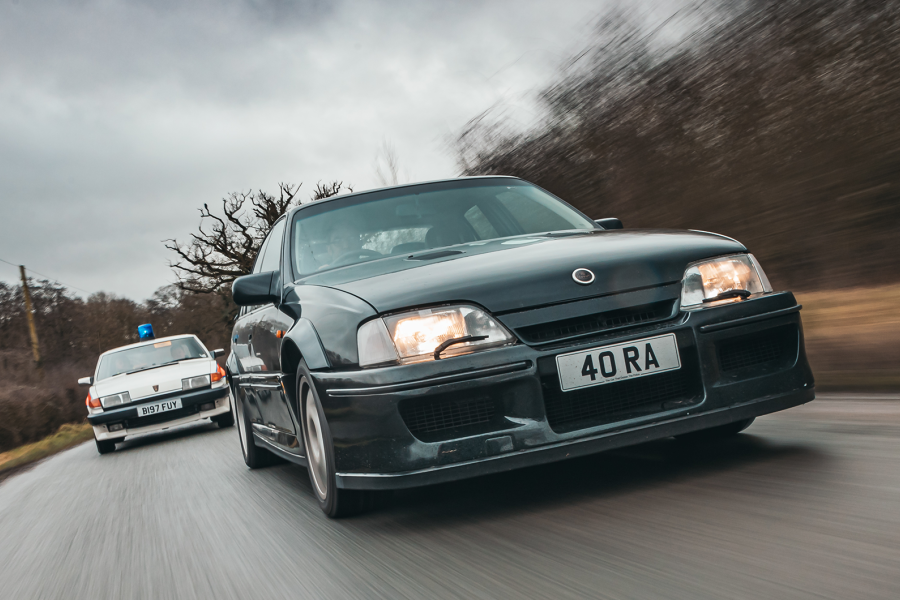You could still get an automatic, but the old 501/502/503/504 model hierarchy was ditched in favour of a traditional options list.
The manual gearbox was a bought-in Getrag, apparently on the basis that low sales of its front-engined cars could no longer justify building the old, Austin Maxi-based five-speed in-house.
But soaring prices, north of £17,000 by 1981, hobbled sales dramatically, with just 99 S2.2 Lotus Elites sold in 1980 and a grand total of just 133 S2.2s by the time production gave way to the Excel in ’82.
This Lotus Elite Series 2.2’s interior was retrimmed in bright yellow
In fact, sales of the Éclat had already begun to overtake the Elite substantially, so the decision to stick with the more conventional booted fastback body for the new model was understandable.
Mike Taylor of LotusBits has probably done more to help keep Elites on the road than anyone else over the past 30 years, and he has an almost unrivalled inventory of parts and knowledge, particularly of the 907 twin-cam engine.
He kindly put together a representative set of Lotus Elites from his database of happy customers to help us celebrate a hard-to-credit half century of this controversial wedge.
The Lotus Elite Series 2.2 received the larger, Type 912 version of the twin-cam engine
Mike Clifford’s 1976 501 has been in his wife’s family from new.
It has never been restored and is still on its original chassis, which at least proves that they didn’t all rot away.
“It was originally Kermit the Frog green, but my wife’s uncle had it resprayed silver,” explains Mike. “Apparently Lotus only made about 75 501s, so it’s quite rare.”
He enjoys the Elite, but says his daughter won’t even ride in it: “It’s so low – compared with modern SUVs it is a completely alien experience. She hates it!”
The Lotus Elite references the marque’s Formula One heritage
Being a basic model, the cabin has survived well and the lack of power steering could be seen as a bonus because the assisted set-up was mildly criticised for being overly light: even at parking speeds it’s acceptably weighted.
The car flows through corners with a lack of both roll and understeer that makes for effortless, swift progress, although you do have to keep above 2500rpm to feel the benefit of the torque.
Use the revs and the 501 feels lively and cruises peacefully, but it is fairly vocal when pushed – there is no disguising that it’s a ‘four’.
The Lotus Elite’s later rims are shared with the Esprit
Mike Taylor casts aspersions on the dependability of the Lotus five-speed ’box, but with only 140lb ft of torque to cope with it is light and precise, with a narrow gate between third and fifth.
Roger Makhlouf’s black S2.2 Lotus Elite is one of the ultra-rare Riviera models, with a removable targa-style roof panel that stows in the boot.
Roger began his passion for the products of Colin Chapman in his 20s, driving +2S Elans, and says he enjoys the Elite principally for its shape, which he likens to a “mini Espada”.
He also commissioned the retrim in bright yellow leather. “If anyone were sick in it, at least you wouldn’t notice,” he laughs.
This heavily modified 1974 Lotus showcases the Elite’s potential without diluting its essence
There is a broader-shouldered feel to the Riviera’s power delivery.
Driving quickly, you rarely have to drop below fourth to keep the urge flowing, with a similarly lusty sluicing from the Dell’Orto carburettors.
The dash looks more polished than that of the earlier car, yet is less characterful, but in matters such as the evenly matched feel of the tiny pedals, the lightness of the Getrag ’box (which has a wider gate) and the general sense that you ‘wear’ the car, it is much like the earlier model, if perhaps a little bit more carefully screwed together.
‘Superb handling was non-negotiable, and the Lotus Elite was much lighter than most of its four-seater GT rivals’
Paul Britton’s 1974 Lotus Elite is a counterpoint to the standard cars, and shows what can be done using modern technology combined with intelligent application of the later developments that made the Excel a more robust, customer-friendly machine.
Finished in a deep blue colour (or is it purple?) as per the original Elite brochure, it features the full range of LotusBits upgrades including an Excel galvanised chassis with transverse top links/wide-based lower wishbones and Toyota Supra-sourced driveshafts.
Apart from the lack of waist moulding it looks outwardly standard, but under the bonnet is a 2.6-litre, 270bhp fuel-injected ‘stroker’ 907 engine with a billet crank, ported head and many other tweaks developed over several seasons in Mike’s fearsome 300bhp Talbot Sunbeam Lotus rally car.
This modified Lotus Elite’s 907 engine has been stroked to 2.6 litres for 270bhp
Combined with an upgrade to the Toyota gearbox, plus a limited-slip diff, the result is a rocketship that will keep up with almost anything you’re likely to encounter.
The torque is in another league and feels as if it could bring you up against the limits of the car’s composure quite rapidly, although the general feel is benign enough.
Combining the best of the new with the look and feel of the 1970s, it is not a Frankenstein restomod but a fully sorted expression of what the four-seater Lotus concept might have become, had it continued in production.
The cleverly conceived four-seater Elite secured Lotus a place at the big players’ table
I would contend that the Type 75 Lotus Elite was one of the cleverest cars of Chapman’s career.
To get four full-sized adults into a slippery, low-slung coupé of compact dimensions, and which combined performance with modest fuel demands, was quite a feat of engineering.
To make that car highly crash-safe – it won the 1974 Don Safety Trophy – and able to meet all foreseeable emissions requirements adds further weight to the argument that the much-maligned Elite was actually an important design, not one to be quietly forgotten about or endlessly castigated.
Images: Luc Lacey
Thanks to: LotusBits
Factfile
Lotus Elite
- Sold/number built 1974-’82/2398
- Construction steel backbone chassis (galvanised for S2.2), glassfibre body
- Engine all-alloy, dohc, 16v 1969/2174cc ‘four’, twin Dell’Orto carburettors
- Max power 155-160bhp @ 6500rpm
- Max torque 140-160lb ft @ 5000rpm
- Transmission five-speed manual or three-speed auto, RWD
- Suspension independent, at front by double wishbones, coil springs, telescopic dampers, anti-roll bar rear trailing arms, lower transverse links, fixed-length driveshafts, coil-over dampers
- Steering rack and pinion, optional power assistance
- Brakes discs/drums, with servo
- Length 14ft 7½in (4458mm)
- Width 5ft 11in (1803mm)
- Height 3ft 11½in (1207mm)
- Wheelbase 8ft 1¾in (2483mm)
- Weight 2552lb (1158kg)
- Mpg 36.2
- 0-60mph 7.5 secs
- Top speed 132mph
- Price new £16,433
- Price now £2-20,000*
*Prices correct at date of original publication
Enjoy more of the world’s best classic car content every month when you subscribe to C&SC – get our latest deals here
READ MORE
The specialist: Lotusbits
Ferrari Mondial vs Porsche 911 vs Alpine GTA vs Lotus Excel: 2+2 equals phwoar
Luxury coupés: Mercedes 230CE vs Lotus Elite vs Lancia Gamma
Martin Buckley
Senior Contributor, Classic & Sports Car





























